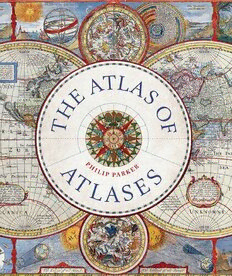
The Atlas of Atlases: Exploring the Most Important Atlases in History and the Cartographers who Made Them PDF
Preview The Atlas of Atlases: Exploring the Most Important Atlases in History and the Cartographers who Made Them
THE ATLAS OF ATLASES PHILIP PARKER CONTENTS INTRODUCTION 1 THE PREHISTORY OF THE ATLAS (TO C. 1200) 2 THE WORLD EXPANDS: THE EARLIEST ATLASES (C. 1200–1492) 3 NEW HORIZONS (1500–1550) 4 THE GOLDEN AGE OF THE ATLAS (1550–1600) 5 THE ATLAS DIVERSIFIES (1600–1700) 6 MAPPING THE NATION (1700–1800) 7 THE HEYDAY OF IMPERIAL MAPPING (1800–1900) 8 THE ATLAS AND WAR (1900–1950) 9 AN ATLAS OF SOCIETY (1950–2000) 10 AN ATLAS BY ANY OTHER NAME (2000–) ENDNOTES FURTHER RESOURCES INDEX PICTURE CREDITS ABOUT THE AUTHOR / ACKNOWLEDGEMENTS INTRODUCTION F or a brief (and presumably agonizing) few hours, the Greek hero Heracles held the whole weight of the World on his shoulders. In exchange for relieving Atlas, the titan whose fate it was to support this intolerable burden, Heracles received the stolen golden apples of the Hesperides, which the hero needed to fulfil the 11th of his 12 labours. It is from this ancient myth that we derive the title of the genre of books which are designed to carry the whole weight of our knowledge of the world within their pages (and which we hope will deliver their own bounty of golden nuggets of information to us). The Atlas of Atlases considers the origin and development of the atlas, from its distant beginnings in mankind’s first attempts to map the world in the ancient Near East in the fifth millennium BC (thus long predating the Heracles story), to the digital mapping systems of today which can create a bespoke map of a region in seconds, a task that once would have taken a trained cartographer months to complete. Maps have always carried an ideological freight. The very earliest were attempts to understand and organize the world in terms that made sense to the viewers. For example, the Babylonian Map of the World created around 600 BC (here), is not an exact description of terrain, nor a means to navigate – aims to which far later maps aspired. It is instead a bold statement of the position of its creator’s hometown at the centre of the world, a sentiment which was still being echoed in the nineteenth century when British cartographers used bold red shading to highlight the vast extent of their empire. Maps could be statements of belief, of power, of agency, long before they were viewed as an attempt to mirror reality on the ground. Statue representing Atlas holding up the world, Kolkata, India Trade and travel have long been two of the primary drivers of mapping. As time went on, information gathered by merchants, pilgrims and adventurers added texture to maps (though medieval cartographers were not above adding fantastical elements such as dog-headed beings, dragons and giants to their maps, despite the fact that no one could plausibly have encountered them). Collections of maps in the forms of itineraries, views and plans of cities, and single maps of countries or of the world (enhanced by the European voyages of discovery from the fifteenth century) approached but did not quite reach the bar of encompassing the whole world within a book. That was a development that had to wait for the mid-sixteenth century, by which time the demands of navigators for a convenient form of detailed mapping which they could hold in their hands (rather than have to unroll), advances in printing, and the appetites of a growing class of literate city- dwellers with money to spare led to the issuing of the first atlases. The Theatrum Orbis Terrarum (‘Theatre of the Globe of the World’, here) by the Dutch cartographer Abraham Ortelius, published in 1570, was the first modern atlas, consisting of a series of regional maps, which reconciled recent advances in knowledge with the time-hallowed system of the ancient Roman geographer Ptolemy, all bound within a single cover. Before long it was joined by a European atlas published by Gerardus Mercator (here) (whose devising of a projection to display the curved surface of the Earth on the flat surface of a map has made him perhaps the most famous cartographer of all), which was the first publication to bear the world ‘atlas’ in its title.
